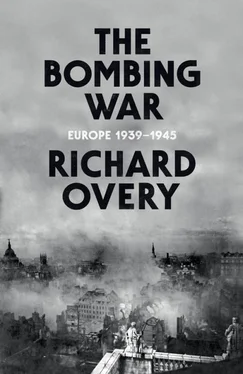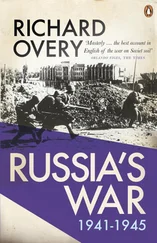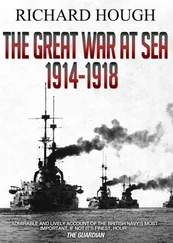The political imperatives are exemplified by the brief aerial assault on Bulgaria. The idea of what is now called a ‘political dividend’ is a dimension of the bombing war that has generally been relegated to second place behind the more strictly military analysis of what bombing did or did not do to the military capability and war economy of the enemy state. Yet it will be found that there are many examples between 1939 and 1945 of bombing campaigns or operations conducted not simply for their expected military outcome, but because they fulfilled one, or a number, of political objectives. The early bombing of Germany by the Royal Air Force in 1940 and 1941 was partly designed, for all its military ineffectiveness, to bring war back to the German people and to create a possible social and political crisis on the home front. It was also undertaken to impress the occupied states of Europe that Britain was serious about continuing the war, and to demonstrate to American opinion that democratic resistance was still alive and well. For the RAF, bombing was seen as the principal way in which the service could show its independence of the army and navy and carve out for itself a distinctive strategic niche. For the British public, during the difficult year that followed defeat in the Battle of France, bombing was one of the few visible things that could be done to the enemy. ‘Our wonderful R.A.F. is giving the Ruhr a terrific bombing,’ wrote one Midlands housewife in her diary. ‘But one thinks also of the homes from where these men come and what it means to their families.’ 33
The political element of the bombing war was partly dictated by the direct involvement of politicians in decision-making about bombing. The bombing of Bulgaria was Churchill’s idea and he remained the driving force behind the argument that air raids would provide a quick and relatively cheap way of forcing the country to change sides. In December 1943, when the Mediterranean commanders dragged their feet over the operations because of poor weather, an irritated Churchill scribbled at the foot of the telegram, ‘I am sorry the weather is so adverse. The political moment may be fleeting.’ Three months later, while the first Bulgarian peace feelers were being put out, Churchill wrote ‘Bomb with high intensity now ’, underlining the final word three times. 34The campaign in the Balkans also showed how casually politicians could decide on operations whose effectiveness they were scarcely in a position to judge from a strategic or operational point of view. The temptation to reach for air power when other means of exerting direct violent pressure were absent was hard to resist. Bombing had the virtues of being flexible, less expensive than other military options, and enjoying a high public visibility, rather like the gunboat in nineteenth-century diplomacy. Political intervention in bombing campaigns was a common feature during the war, culminating in the decision eventually taken to drop atomic weapons on Hiroshima and Nagasaki in August 1945. This (almost) final act in the bombing war has generated a continuing debate about the balance between political and military considerations, but it could equally be applied to other wartime contexts. Evaluating the effects of the bombing of Bulgaria and other Balkan states, it was observed that bombing possessed the common singular virtue of ‘demonstrating to their peoples that the war is being brought home to them by the United Nations’. 35In this sense the instrumental use of air power, recently and unambiguously expressed in the strategy of ‘Shock and Awe’, first articulated as a strategic aim at the United States National Defense University in the 1990s and applied spectacularly to Baghdad and other Iraqi cities in 2003, has its roots firmly in the pattern of ‘political’ bombing in the Second World War.
Bombing was, of course, much more than a set of convenient political tools and much of what follows describes the organizations, the forces and the technology that made bombing operations possible. Strategic bombing was a military activity which had to be organized very differently from operations of the army and navy and it was one fraught with difficulty under the technical conditions of the time. Air force commanders wanted to deliver what the politicians wanted, but as a consequence bomber forces were always trying to run before they could walk. All the major air services faced a long learning curve during the war as they struggled to overcome a whole range of inherent problems and limitations. Power was generally projected onto distant cities or industrial installations and in most cases involved long and hazardous flights, hampered by fickle weather, by enemy defences, and by complex issues of navigation and effective bomb-aiming. Fixed bases had to be secured near enough to enable the bombing to take place. The rate of loss of aircrew was high, though not exceptional if a comparison is made with other front-line forces. The most distinctive feature of bomber operations was the capacity of aircraft to penetrate enemy airspace and to inflict damage on the domestic economy, military capability and population according to the prevailing directives. No other service could project power in this way, so by default the bomber became the supreme instrument for waging what was defined at the time as total war. The belief that modern, industrialized war was now to be fought between whole societies, each mobilizing the material energies and willpower of their entire population for the task of fighting, arming and supplying the mass armed forces of the modern age, took root in the generation that grew up after the Great War. While it was generally understood by the air forces themselves that bombing enemy populations for the sake of exerting terror was contrary to conventional rules of engagement, attacking and killing armaments workers, destroying port facilities or even burning down crops could all be construed, without too much sophistry, as legitimate objectives of total war.
Before the coming of the Second World War those air forces that had considered the implications of war against the enemy home front had to choose a set of targets which made strategic sense. These included all military installations, heavy industry, energy supply, armaments production and communications. The German campaign against Britain was based on a detailed gazetteer of industrial and military targets scrupulously compiled before 1939 from photo-reconnaissance evidence and industrial intelligence. 36In the summer of 1941 the United States Army Air Forces drew up a plan for bombing Germany that identified six key target systems and a total of 154 individual industrial targets, whose destruction was supposed to lead to the collapse of the German war economy and its supporting services. 37Air force commanders were reluctant to endorse operations that could not demonstrate some clear military or war economic purpose, however broadly the net of total war might be spread, or however forceful the political pressure. Even in Bulgaria, the brief political directive from Churchill was watered down when it was passed on to the military chiefs to give it a spurious military justification: ‘Sofia is a centre of administration of belligerent government, an important railway centre, and has barracks, arsenals and marshalling yards.’ 38The reluctance of the air commanders on the spot to carry out the bombing of Bulgaria with the single-mindedness demanded by Churchill, reflected their view that bombing was not likely to achieve very much in practical terms, while the bombing of, for example, Romanian oil supplies or the Viennese aircraft industry would clearly have significant consequences. The short campaign against Bulgaria illustrated the tension that existed between the exaggerated expectations of politicians and public about the likely political and psychological results from attacking an enemy from the air, and the demonstrable value of doing so in military and economic terms. This ambiguity underlay many of the wider wartime arguments between politicians, airmen and the military chiefs over what bombing could or could not deliver and it helps to explain a feature characteristic of all bombing campaigns: the escalation of the degree of indiscriminate damage.
Читать дальше
Конец ознакомительного отрывка
Купить книгу












